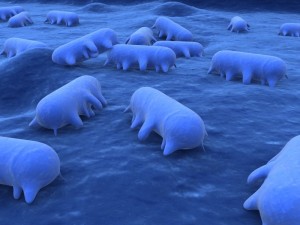The Food and Drug Administration (FDA) has released its 2012-2013 National Antimicrobial Resistance Monitoring System (NARMS) Integrated Report. The report focuses on major food born pathogens that are resistant to antibiotics important in human medicine, and on multidrug resistant pathogens.
 NARMS screens for non-typhoidal Salmonella, Campylobacter, E. coli, and Enterococcus. Salmonella and Campylobacter are the leading causes of bacterial food poisoning.
NARMS screens for non-typhoidal Salmonella, Campylobacter, E. coli, and Enterococcus. Salmonella and Campylobacter are the leading causes of bacterial food poisoning.
The report reveals “mostly encouraging findings, with some areas of concern.” About 80% of human Salmonella isolates are not resistant to any of the tested antibiotics. This number has not changed in the past 10 years. In addition, Salmonella multi-drug resistance has not changed, and the number of multi-drug resistant Salmonella isolates in retail chicken have gone down about 3%.
Campylobacer jejuni resistance to the fluoroquinolone ciprofloxacin, the most common antibiotic used to treat human illness, was at its lowest level in retail chicken to date, at 11%. This is the strain that causes most human Campylobacter infections.
But, multidrug resistance in human isolates of a common strain of Salmonella continues to rise. This resistance has more than doubled, from 18% in 2011 to 46% in 2013. And an increase in multidrug resistance and ceftriaxone resistance was found in Salmonella Dublin isolates from cattle and from humans.
The reports states that people can help protect themselves from foodborne illness by following the tips of clean, separate, cook, and chill. Clean hands, work surfaces, and utensils after they touch raw meats, poultry, and eggs. Keep raw meats, poultry, and eggs separate from foods that are not cooked before eating. Cook all foods containing meats and eggs to 160*F as measured by a food thermometer. And refrigerate perishable foods within 2 hours of cooking.





I am surprised and encouraged that antibiotic resistance is Salmonella has not increased.
And like you say, the way to prevention in the first place is: clean, separate, cook, and chill.